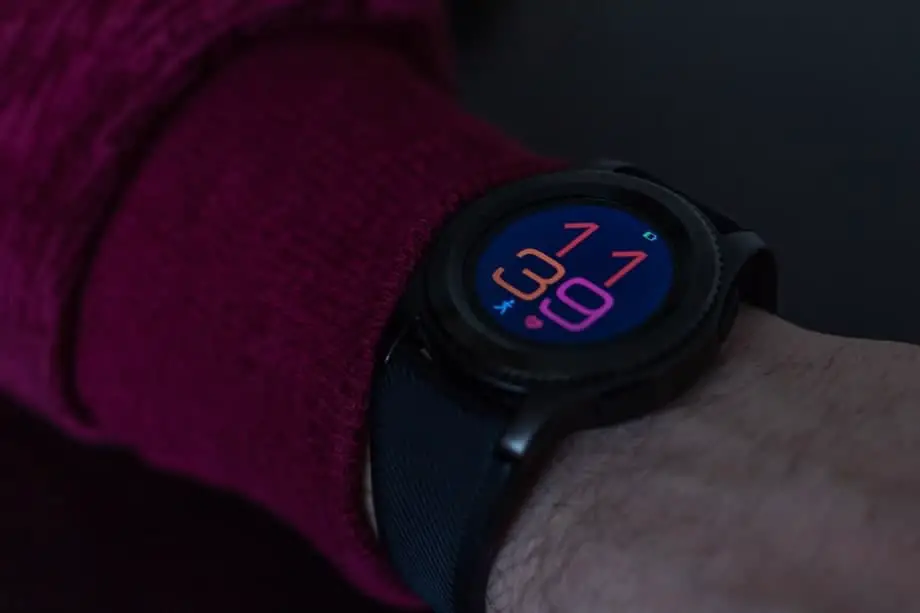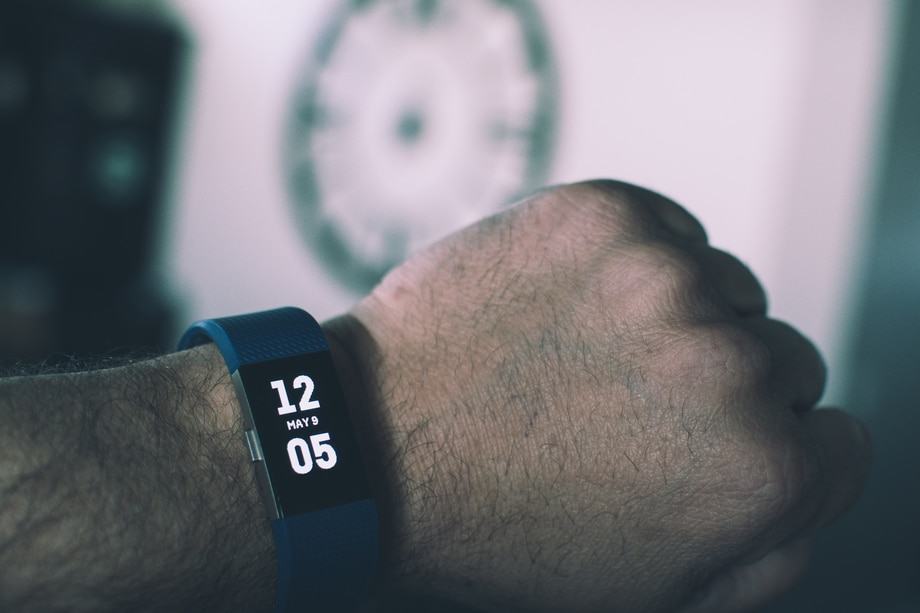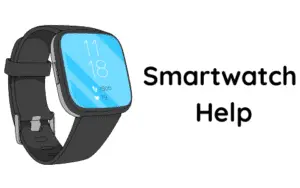The creator of this post has chosen the Fitbit Versa 3 smartwatch as the best smartwatch that offers the best fitness tracking features.
So, you can’t decide if you either want to go for a smartwatch or fitness tracker (also known as a smart band).
It can for sure be a tough decision and that’s why I’ve written this article to make it more clear to you what you can expect from both the devices.
Let’s jump right into this smartwatch vs. fitness tracker article, hope you enjoy!
The Best Smartwatches For Women And Men
Products | Features | |
* Great For Women * |
| |
* Great For Women * |
| |
* Great For Women * |
| |
* Great For Men * |
| |
* Great For Men * |
| |
* Great For Men * |
|
Quick Navigation
Why Should I Choose A Smartwatch?
What Is The Main Purpose Of A Smartwatch?
Are Smartwatches Easier To Handle Than Fitness Trackers?
How Is The Display Technology Of Smartwatches These Days?
What Can I Expect Of The Battery Life When It Comes To Smartwatches?
How Much Will It Cost Me If I Decide To Buy A Smartwatch?
What Are The Pros Of A Smartwatch?
What Are The Cons Of A Smartwatch?
Why Should I Choose A Fitness Tracker?
What Is The Main Purpose Of A Fitness Tracker?
Are Fitness Trackers Easier To Handle Than Smartwatches?
How Is The Display Technology Of Fitness Trackers?
What Can I Expect Of The Battery Life When It Comes To Fitness Trackers?
How Much Will It Cost Me If I Decide To Buy A Fitness Tracker?
What Are The Pros Of A Fitness Tracker?
What Are The Cons Of A Fitness Tracker?
Conclusion About Fitness Trackers
Are There Any Devices That Could Offer Me The Best Of Both Worlds?
What is a smartwatch?
Wikipedia describes smartwatches as a computerized wristwatch that is equipped to do more than just timekeeping.
While this concept has been in the works since the late 1970s, it wasn’t until a few years ago when it suddenly got the push it deserves, from development to marketing.
But it wasn’t Google or Android who got there first.
It was a Kickstarter company called Pebble who started in 2012. Google and Android followed 2 years after.

Why should I choose a smartwatch?
The smartwatch technology has gotten a lot better since then and has improved beyond expectations for many people.
Both Apple and Android are now going head to head against one another to see who’s got the best smartwatch on the market today.
If you are attached to your phone but don’t want the hassle of pulling it out every time a notification comes in then this is where the smartwatch comes in.
Otherwise, if you just want something that monitors your vital statistics such as calories, heart rate, and steps taken, then go for a fitness tracker.
What Is The Main Purpose Of a Smartwatch?
Smartwatches do more than just telling time.
We’re not talking about that old watch you had in grade school where there was a calculator attached to it.
Smartwatches are fully-equipped with digital tools and comparable to a smartphone.
Smartwatches can run apps, playback all forms of digital media such as audio tracks or radio streams right to your Bluetooth headset.
Its Bluetooth connectivity also means that you can read and send messages from your smartwatch, and even place or answer calls.
Are Smartwatches Easier to Handle Than Fitness Trackers?
Both fitness trackers and smartwatches function almost the same, but there are notable differences.
Smartwatches are intended for communication while fitness trackers are meant for monitoring and data gathering.
Smartwatches are, in a way, very much like smartphones so they’re not that difficult to configure.
It’s easy to set them up and connect them to your iOS or Android phone.
They’re pretty much the extension of your smartphone, so if you know your way around the iOS or Android OS operating systems, then it should be easy for you to navigate through a smartwatch.
How is the Display Technology of Smartwatches These Days?
All current smartphones have a backlit LCD or OLED display, which requires battery power to generate light.
Smartwatches are built the same way.
Newer iterations of the Samsung Gear and the Apple Watch are equipped with AMOLED displays that provide more vibrant and brighter colors.
Older iterations have OLED displays, which provide clear and vibrant images, but just not as bright or as power-efficient as AMOLED displays.
What Can I Expect of the Battery Life When It Comes to Smartwatches?
The battery life of a smartwatch can depend on its usage.
On average, smartwatches can go for up to 3 days on a full charge with GPS and internet activated.
Other smartwatches from brands like Garmin can last up to a full week on a full charge, but they come with a hefty price tag.
How Much Will It Cost me If I Decide To Buy a Smartwatch?
Smartwatches cost anywhere between $180 to $500, depending on the brand and model.
The newer generation of smartwatches averages at the $350 mark.
What are the pros of a smartwatch?
1. You get notifications on your smartwatch.
Smartwatches emphasize on communication, so one of its core features is that you get notified if you receive a text, a phone call, or any updates on your smartphone that require your attention.
This is also great outdoors when our smartphones are in our bags and you don’t just want to pull it out whenever you hear a “DING!” sound.
Smartwatches also provide you with notifications for booking apps such as Uber or Grab by providing you with information on the cab number and the time it takes to arrive.
Again, all information that you want to receive is delivered to the smartwatch.
When you’ve read the notification then you can just swipe right if you want to get rid of the notification.
On a personal note, I get notifications from my Fossil Q Marshal smartwatch whenever my Facebook Messenger or Discord Channels receive messages.
I also receive notifications about incoming SMS messages and I can reply straight from my watch using the handwriting feature.
2. Easy to track turn-by-turn notifications.
When you’re driving, you might be annoyed every time you have to look at your phone for Google or Apple Maps.
Unless you’re driving a new car that supports and displays these maps on the screen, then you’re going to have to rely on attaching your phone to a holder and watching it now and then for updates.
This is where a smartwatch comes in. During trips, you can just set your destination on Google or Apple Maps and turn the screen off.
You then get a notification from your watch about the distance before the next turn.
During long straight drives, you may not get voice prompts as often so a quick flick of the wrist can simply turn on the watch and still provide you with the information you need for assurance.
3. Smartwatches help keep you active.
The Apple Watch Series 2 and beyond were more focused on fitness to become relevant in the smartwatch market.
That’s why they focused on building their watches with GPS and water-resistant features.
The newer iterations, such as the Apple Watch Series 4, are now equipped with Gorilla Glass, motion sensors, and a heart rate monitor for the rugged outdoorsman or the heavy lifter.
Because of the rich user interface, smartwatches can display valuable fitness data that will skyrocket your workouts.
Google Fit, which is Android’s counterpart to the Apple Watch activity app, lets you set daily goals such as how many times you have to move and it keeps track of your exercise goals.
You also get notified when you haven’t done anything related to your goal in a day.
What are the cons of a smartwatch?
1. They can be quite expensive.
A smartwatch is most of the time more expensive than a fitness tracker because it is technically a smartphone on a wristband.
You’re paying anywhere between $300 to $500 for the latest iterations of Android and iOS smartwatches.
But the payoff is that you are getting access to more features and both the Android and iOS smartwatches are made up of sturdier materials.
Conclusion about smartwatches
If you want to do more than just tracking your fitness goals on your wrist, then a smartwatch might be a good investment.
Why Should I Choose a Fitness Tracker?
Since Fitbit hit the market in 2009, wearable fitness trackers took the world by storm.
These days, you won’t find anyone at the gym without one. It could be on their wrist or clipped to their belt.
People who use them just end up loving them more and more, and end up buying the latest iterations.
Be careful about asking them what it is that they like about their fitness tracker because they’ll sit you down and talk your ear off about how it’s the best thing ever.
They’ll even go as far as telling you how many steps they’ve taken that day and how many calories they burned off in a single workout.

What is the main purpose of a fitness tracker?
Fitness trackers, just like smartwatches, have different functionalities, but some are better than others.
Fitness trackers can count your steps since they are equipped with an accelerometer, which is a device that measures how fast something is changing by its speed or direction.
It can also monitor your movements from up and down to side to side.
Other fitness trackers are also equipped with a gyroscope, which is a device that spins in any direction on a fixed axis to figure out if you’re sitting down, lying down, or standing up.
Some fitness trackers are also equipped with barometers that measure wind speed and atmospheric pressure and a tiny GPS that tracks your location, which is quite handy for monitoring your routes on long runs or rides.
Just like smartwatches, fitness trackers can also track your heart rate, both while exercising and while resting.
But they’re more advanced since they can detect skin temperature and your perspiration levels.
This combined with your pulse rate helps you figure out how hard you’ve worked out.
Some fitness trackers also keep track of the calories burned during the workout, or during the day.
There are also apps that you can install on your smartphone that will sync up with your fitness tracker and will help you monitor the calories you’ve consumed against the calories you’ve burned.
This should help you monitor your weight and activity if you’re actively trying to lose weight.
Fitness trackers can also track your sleep data without relying on a 3rd party app as most smartwatches do.
They can detect motion when you’re awake, lightly asleep, or in a deep sleep.
Are Fitness Trackers Easier to Handle Than Smartwatches?
Fitness trackers are relatively easier to use than smartwatches, but the latest models from the best brands are now similar to how smartwatches function so you can sync them up with your iOS or Android devices.
Again, it boils down to what you need out of a fitness tracker or a smartwatch.
If you’re just after data, then a fitness tracker provides you with more in-depth data than a smartwatch does.
How Is The Display Technology of Fitness Trackers?
Just like smartwatches, fitness trackers have OLED and AMOLED displays.
The only difference being the screen size.
Fitness trackers have slimmer screens than smartwatches simply because it only provides you with data and doesn’t focus on letting you read messages or providing you with notifications.
What Can I Expect of the Battery Life When It Comes to Fitness Trackers?
Fitness trackers have lower-power displays than smartwatches, so expect them to last at least a week or two on a full charge.
How Much Will It Cost Me If I Decide To Buy a Fitness Tracker?
While these are notable fitness trends, a lot of fitness trackers come with a hefty price tag.
You’ll find them anywhere between $60 up to $350 for a bulky tracker.
Again, these prices would depend on your needs so if you’re looking for something that just counts your steps while running, a $100 to $150 fitness tracker will do just fine.
What are the pros of a fitness tracker?
1. Helps you become more accountable.
Fitness trackers can track your goals and progress and encourage you to walk a few more steps than yesterday or to run faster than you did before.
Research shows that if a user is wearing a fitness tracker, even if it’s just a basic pedometer, it increases their activity levels by 30 percent.
2. Helps you with individually-tailored goals.
Fitness trackers can give you tips and can help you accomplish your goals that you can set for yourself.
It doesn’t matter if you’re trying to run a 5K marathon or just trying to get your gym PR’s up.
3. It’s all you.
Going to the gym can be a nerve-wracking experience for some people, you’re, for example, always questioning yourself if you’ve done enough workouts for that day and if you’ve hit your goals.
A fitness tracker can help remind you that the workout, even if it’s just running on a treadmill, is all about you.
A fitness tracker doesn’t even need the gym to work properly.
As long as you’re active in the park or working out at home, the fitness tracker can still do wonders in motivating you.
4. More affordable than smartwatches.
A lot of fitness trackers, especially the newer models, retail for just above $100.
At a maximum, you’re paying $200 to $250, and even at the maximum price, it’s still relatively cheaper than a smartwatch.
5. Calorie tracking is a thing.
Fitness trackers are now equipped with a calorie counter to help you keep track of the calories consumed and the calories burned during a workout.
This should help you monitor your weight if you’re on a weight loss program.
Some fitness trackers are also equipped with apps to measure your daily water intake, food choices, and even go as far as calculating the quality of your diet plan.

What are the cons of a fitness tracker?
1. Accuracy can be questionable.
Some fitness trackers don’t provide 100% metrics, such as steps taken.
This usually applies to the cheaper models.
Instead of accurately tracking your steps, it only gives you an estimation.
This is why you can’t rely on cheaper fitness trackers if you’re keeping track of how many steps you’ve taken.
The same thing can be said for their calorie-counting feature.
Conclusion about fitness trackers
Fitness trackers are just as good as smartwatches, however, in a way, they do provide a certain edge over smartwatches because they’re more geared towards providing you with metrics concerning fitness and physical activities.
So, for the fitness enthusiasts that love to track their statistics is a fitness tracker most likely a better option.
Are There Any Devices That Could Offer Me the Best of Both Worlds?
If you’re looking for a device that carries both smartwatch and fitness tracking functionalities, then these are the smartwatches you should be looking for.
1. Samsung Galaxy Watch
Probably one of the best ones on this list is the Samsung Galaxy Watch.
The watch is available in a larger 46mm version and comes with up to 4 days of battery life.
The rotating bezel is also a highlighted feature and the interface is easy to use.
2. Apple Watch Series 4
The Apple Watch Series 4 is a great option too and is one of the best wearables that you can purchase this year.
You can choose between a 40mm or 44mm watch size, which is just a few mm shy of the Samsung Galaxy Watch’s size, but the display is brighter.
There’s also the ECG tracker, which is a new addition to the Apple Watch line of features.
This is a more effective heart rate tracker that even tells you if you’re at risk for atrial fibrillation.
It also comes equipped with Gorilla Glass so it can take a beating when you’re using it at the gym.
3. Fossil Sport 4th Generation
Fossil is one of the most recognized brands of wearables and has come a long way over the past few years.
Their newer model, The Fossil Sport 4th Generation, is a top-end smartwatch that’s cheaper than the two mentioned smartwatches above.
It’s equipped with a Snapdragon Wear 3100 chipset inside so you get a faster and smoother experience than older Wear OS watches.
4. Fitbit Versa
Fitbit is probably the biggest name in the fitness tracking industry.
The Fitbit Versa was Fitbit’s first attempt at creating their first-ever smartwatch.
It comes with 2.5GB of storage which can be used for storing your favorite songs and it has a battery that can last up to 3 days on a full charge.
However, it doesn’t have GPS tracking and the design doesn’t feel as premium as the others on this list, but it is still one of the best watches to buy because of its affordability.
5. TicWatch E2
Another cheap wearable is the TicWatch E2, coming from a smaller brand called Mobvoi.
The E2 is waterproof.
The design isn’t that attractive, but it does come with built-in GPS, an accurate heart rate monitor, and sleep tracking capabilities.
6. Kate Spade Scallop 2
The Kate Spade Scallop 2 doesn’t disappoint in terms of design since the watch is designed for women.
The Kate Spade Scallop 2 comes from its parent company, Fossil, and they added all the key features that the first model was lacking.
This includes a heart rate monitor, GPS, and NFC for Google Pay features.
It is 3ATM water-resistant, so you can wear it when you go for a swim.
7. Matrix PowerWatch
It also has GPS and a built-in heart rate monitor.
It also boasts of a new color screen too.
8. Garmin Vivosmart 4
The Garmin Vivosmart 4 is considered one of the best fitness trackers on this list because it does more than your average fitness tracker.
What’s different about this model is that this one’s not intended for the serious athlete, but instead, caters to the average Joe and Jane who want to monitor their activity.
The screen is also bigger when compared to other Garmin products with an exceptional battery life that can last up to a week.
The one thing that sets this one apart from all the other wearables on this list is its Body Battery feature, which helps you pick the best time to do a workout.
It can also monitor your energy levels.
End conclusion
In the end, it’s your decision on whether you go for a smartwatch or a fitness tracker, it just really depends on what it is that you want from the wearable.
Are you eager to keep track of your fitness and health data?
Or are you more after the fact that you just want to access your smartphone without using your smartphone?
Fitness trackers and smartwatches are similar, but they’re worlds apart in terms of the features they provide.
The Best Smartwatches For Women And Men
Products | Features | |
* Great For Women * |
| |
* Great For Women * |
| |
* Great For Women * |
| |
* Great For Men * |
| |
* Great For Men * |
| |
* Great For Men * |
|
